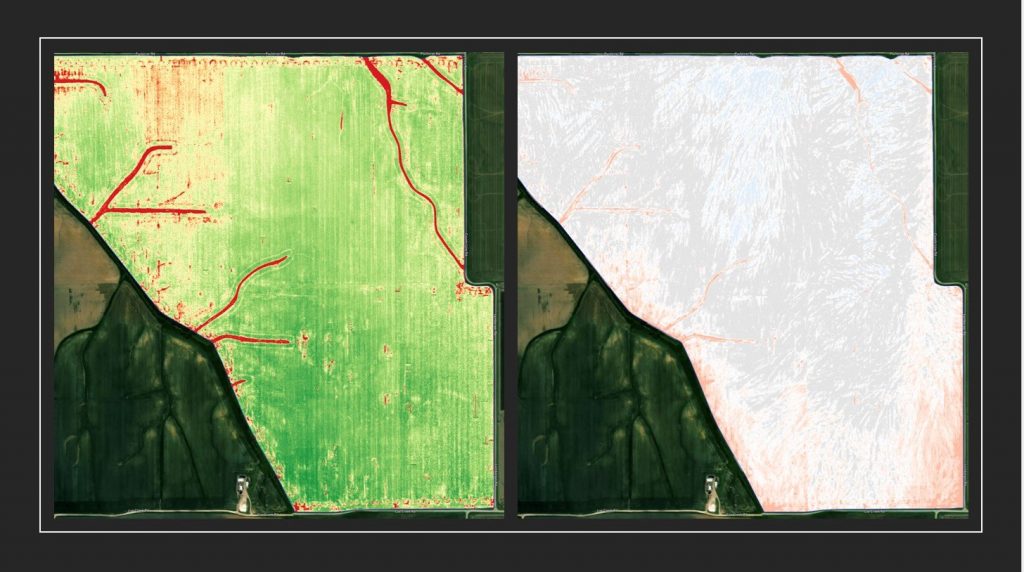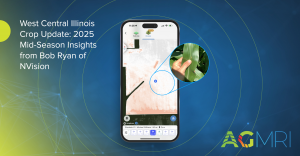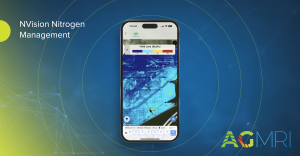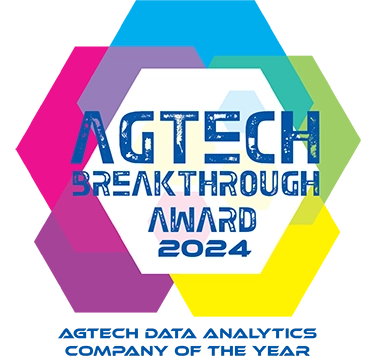Fungicides have always been a game-time decision. And, with input prices sky-rocketing for 2022 – it could be an interesting year for those in agriculture making the decision to spray or not to spray. One thing’s for sure: disease can wreak havoc in a field. You don’t have to look any further than Tar Spot in 2021 to get to that conclusion.
Tar Spot took many in the Midwest by storm in 2021. But, close monitoring and quick triggers to treat the fields saved many farmers’ from significant loss.
“The windows for fungicide applications are always tight and last year was not exception,” says Matt Schoenbrod, account manager for Intelinair. “However, AGMRI customers were able to monitor their fields, prioritize applications and ultimately justify whether or not to spray a second application.”
For Schoenbrod and his customers, AGMRI detected signs of stress in the field before Tar Spot was visible.

July 2 images of a Central Illinois corn field. The NDVI image (on the left) did not indicate any signs of crops stress, however the thermal image (right) indicated some level of stress.
“Our thermal map showed some stress in the field in Central Illinois early in July,” adds Schoenbrod. “We knew nothing else was going on in the field and recommended scouting. Just like a human MRI, early detection is important.”
The customer scouted but did not see anything out of the ordinary in the field. But, flagging that area to scout later proved dividends.
“By July 28, other maps – including NDVI – showed a lot of stress. The customer went to scout the field again and this time found tar spot,” explained Schoenbrod. “The flagged areas provided by monitoring took the guess work out of where to scout and protected the fields’ profit potential.”

NDVI (left) and thermal (right) captured on July 28 in the same field with a verified Tar Spot infestation.
AGMRI helps customers monitor fields, know exactly where to scout when stress occurs, and helps them prioritize where fungicide applications take place. With everyone on edge with input prices, AGMRI provides the backup needed to justify the decision to spray or not to spray, along with pulling the trigger on a second fungicide application.















